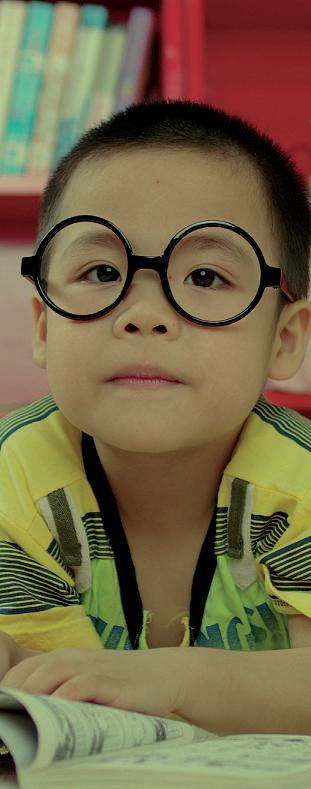
3 minute read
Peer mentoring: increasing attainment and belonging
Collaborative programmes that pair students with special educational needs and disabilities (SEND) with their peers can be an effective tool to improve learning outcomes and increase asense of belonging.
Paul Willis, SENDCO at All Saints Catholic School in Dagenham, outlines his school’sapproach to mentoring, and discusses the impact of anew initiative that the school’sstudents have taken on as their own.
All Saints School is alarger than average secondaryschool within the dioceseofBrentwood.
We have over 1,400 students and our students with SEND encompass needssuchasmoderate learning difficulties(MLD), autism, social emotional mental health(SEMH) needs and speech,language and communication needs(SLCN).
Itookonmycurrent role just over 12 months ago andwe’venow amalgamated provision formore able students and those with medical needs and special educationalneeds under one remit.
We rebranded thedepartment and it is nowthe Emmaus Centre for Exceptional Needs&Development. Oneparticular programmethatwehave introduced in theCentre hasproven to be arealeye-opener forour school and ourstudents,withbenefits going beyondwhatweoriginally anticipated.
WHAT WE WANTED TO ACHIEVE, ANDHOW
In January of this year,weintroduced apeer mentoring programme withinthe Centre.This initiative cameabout becausewewanted to supporta culture of learning, of sharing information and helping others.Our aim was to widenour existingprogramme, in which our scholar programme students workedwith their peers withSEND. It came about initiallybecausesomeofthe more able students were taking the initiative and using their skills outsideofthe scope of our original programme; they startedhelpingother students beyond the programme andwesaw the positives rightawayfor boththe mentors andthe mentees
My advice for anyone who wants to trythisintheirown setting would be to make sure that you've identifiedthe students whoare bestplaced to work with students with SEND. Another important factor hasbeenownership.Wewanted to position theprogramme in such away that it was almost perceived as the students’ idea to get involved and this hasbeencrucial in helpingengagement.
In our school, foreachofour scholars, programmes and groups,I havea GoogleClassroom. Thisgives studentsa waytoengage outside of education, based on their interestsand what they want to take part in.Wesenta GoogleFormto studentstoinvite them to participate, asking themwhattheywereinterestedinsharing withtheir younger peerswithSEND, whether it was advice, support with learningorjusta friendly conversation.I was blown away by their reaction;wereceivedmore than twice the numberofresponses that we anticipated.Now we havearound30students per year groupinvolved in theprogramme. The mentors were selected based on their lastassessment grades, their predicted grades and an average gradescore and, to leave no stone unturned,wealsoincluded thosewho are excellinginaparticular subject area.
HOWITWORKS,AND WHAT THEBENEFITSARE
Thefirst session was an icebreaker to helpall students get to knoweach other Iwas impressed by the engagement, the communication and interaction. From there, we identified areas that each student withSEND needed help in, and we pairedthe studentsappropriately
For example, one is astudentwith an Education, Health andCarePlan(EHCP) for SEMH needswho wasstruggling with maths. He was paired with an older student who has been accepted by aRussell Group universityfor maths and the twowork verywelltogether
The benefitsgobeyond helpwith a particular subject; when theysee each other in thedepartmentnow it's “doyou need help in maths?”and “couldyou help me with this?”. We’veseenthis shift take place across differentsubjects, andevenextra-curricularactivities like basketball.Wesee peers whoaren’t partofthe programme helping with homework or with collaborativework. We find the students whowouldusually be disengaged coming in earlyinthe morning to get help from an elder peer whoisanexpertinthatarea.
Withone of thestudents, we hadtried different interventions, rangingfrom online interventionsthrough to atutoring service, but theywerealwayslateand reluctant to learnorengage. The mentoring programme provedtobekey;thatstudent nowcomes in early to learnfrom theirpeers,and we can seetheyfeelmore of asense of belonging
The socialimpactofthe programme was immediate; ithas helped remove some of the stigma for students with SEND and we seemoreconversations in thehallways between students who wouldn’tusually engagewith each other.Interms ofsoft skills, an increaseinconfidence has been noticeable. This runs through seemingly smaller things like being able to go to the canteen through to increased engagement insocial circles as well as learning. Communication skills havealsoincreased leaps andbounds and we’ve found that the programme gives allthe students a sense of responsibilityaswellaspride in theirsubjectareaand their learning.
Otherinitiativesinplayand What Thefuture Holds
Our teachers runliteracy interventions withthe students whohave been identifiedthrough literacy assessment. That runs through years seven, eight and nine,and we also have awholeschool reading exercise,where everystudent reads the samebookeach week. We found that this shared experiencecreated acatalyst for conversationand works as abondingactivity as well as alearning one. Ithinkweforgetasadults thatthere oftenneeds to be acatalyst in aconversation; if you don't have thatcatalyst, if you don’thave that same areaofinterest, youcan be isolated. By sharingwith awhole year group,wecan addressthat, andprovideacommon ground for discussion. The students can talk aboutthatbook with anyoneintheir form, which has increasedliteracy,reading comprehension and widerdiscussion across the year groups Forour mentoringprogramme, we’rekeen to see how the students want it to develop. They’reour measure of howeffective it is. Academicresults matter butthe cultural impactisjustas important to us. Getting more students engaged, increasing collaboration andcommunication, increasing ownership of education;all these areas play avital role once astudent moves beyond school,collegeoruniversity,and havinga programme that supports thehard andsoft skillsdevelopment for ourstudentsisanincredibly positivething for our school.















